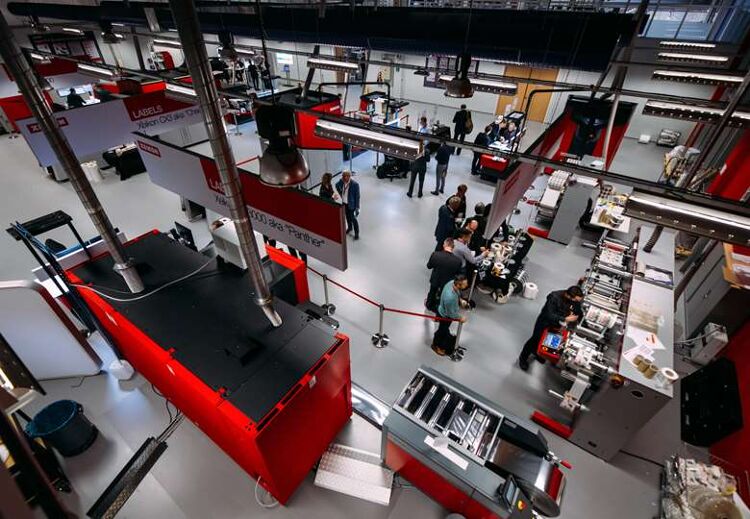Xeikon is doing more with less

Xeikon has recently introduced a new program for its digital press customers, to help them improve production efficiencies. This is a hands on effort that users of Xeikon digital presses can implement in order to cut production time, ink and toner consumption, materials waste and energy usage. Laurel Brunner discusses this new program in detail.
The idea is to help customers to better cope with cost increases in electricity and the increasingly worrying spectre of materials shortages. Overall the plan should also cut environmental impacts, by making businesses more efficient.
The program works by making sure that Xeikon customer services managers have the knowledge to advise customers on what they can do differently to make a positive difference to their cost effectiveness. This is one of the standout aspects of the Xeikon program and the thing that takes it out of the realm of greenwashing. Advisers are equipped to help customers improve lead times and control the amount of materials waste a print run generates. They are also helping to keep operator involvement to a minimum through process automation. It all adds up to reductions in the carbon footprints of production processes and for individual print runs.
Inevitably this will lead to new business for Xeikon in the form of upgrades to existing devices and workflow systems. And that is of course the idea with any initiatives to support customers. But cynicism aside, Xeikon has some clever innovations to help their users to get the most out of their presses and the materials they print. The VariLane option in the X-800 digital front end creates lanes across a print width so that small format work, such as business cards or labels, can be printed alongside larger formats thereby taking advantage of the extra space on the substrate that might otherwise be wasted.
Xeikon’s colour management software has also been tweaked so that output quality requirements can be adjusted, to reduce the amounts of ink and toner needed to meet target output values. Performance data, waste levels and other business management data are reported in real time so that set-ups for upcoming jobs can be optimised. The Do More with Less program is available for all Xeikon platforms.
What makes the Do More with Less program noteworthy, is the fact that it exists at all. More important the program it is being resourced with dedicated training to help customers to improve their sustainability. This isn’t rocket science and it takes the Do More with Less program out of the realms of greenwash and into a more tangible reality.
Source Information: This article was produced by the Verdigris Project, an industry initiative intended to raise awareness of print’s positive environmental impact. This weekly commentary helps printing companies keep up to date with environmental standards, and how environmentally friendly business management can help improve their bottom lines. Verdigris is supported by the following companies: Agfa Graphics, EFI, Fespa, Fujifilm, HP, Kodak, Miraclon, RicohSplash PR, Unity Publishing and Xeikon.
Topics
Interested in joining our community?
Enquire today about joining your local FESPA Association or FESPA Direct
Recent news

The importance of ink for large format printers
Ink is crucial for large format inkjet printers, influencing substrate compatibility, productivity, and cost. Nessan Cleary discusses the three main types which include UV-curable ink, latex ink and eco-solvent ink. Each ink type has specific strengths and weaknesses, making printers choice dependent on budget and intended applications.

What are the benefits of Direct-To-Fabric printing?
Direct-to-fabric printing is gaining popularity for high-volume textile production, enabling on-demand, customized short runs. These printers offer ink flexibility, accommodating various fabric types like cotton and silk, though ink development focuses on faster turnaround by reducing pre- and post-processing. Compared to traditional methods, direct-to-fabric inkjet printing is a more sustainable option due to reduced water and chemical usage, and localized production.

What are the opportunities for large format providers regarding digital touch screens?
Digital touchscreens are becoming increasingly common, offering businesses opportunities to improve customer engagement and streamline operations. Nessan Cleary shares, while more expensive to implement than standard digital displays due to complex software and integration needs, touchscreens provide self-service options, multilingual support, and can reduce staffing costs in various settings like retail, transportation, and healthcare.
